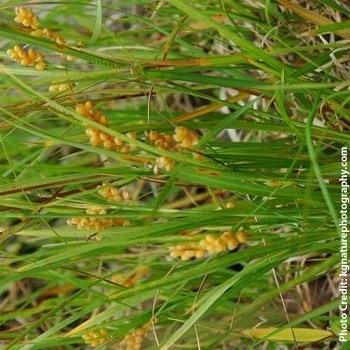Golden sedge
(Carex aurea)

Description
Carex aurea is a species of sedge known by the common name golden sedge. It is native to much of North America, including most of Canada and the western, upper Midwest, and northeastern United States. It grows in wet habitat, often on soils of a basic pH. Carex aurea produces stems up to about 40 cm (16 in) tall. The inflorescence produces staminate and pistillate flowers, the latter yielding rounded fruits. The fruit is coated in a sac called a perigynium which is fleshy and green at full size and then turns bright orange just before it falls off. Carex is a vast genus of more than 2,000 species of grass-like plants in the family Cyperaceae, commonly known as sedges (or seg, in older books). Other members of the family Cyperaceae are also called sedges, however those of genus Carex may be called true sedges, and it is the most species-rich genus in the family. The study of Carex is known as caricology. All species of Carex are perennial, although some species, such as C. bebbii and C. viridula can fruit in their first year of growth, and may not survive longer. They typically have rhizomes, stolons or short rootstocks, but some species grow in tufts (caespitose). The culm – the flower-bearing stalk – is unbranched and usually erect. It is usually distinctly triangular in section.
Taxonomic tree:







